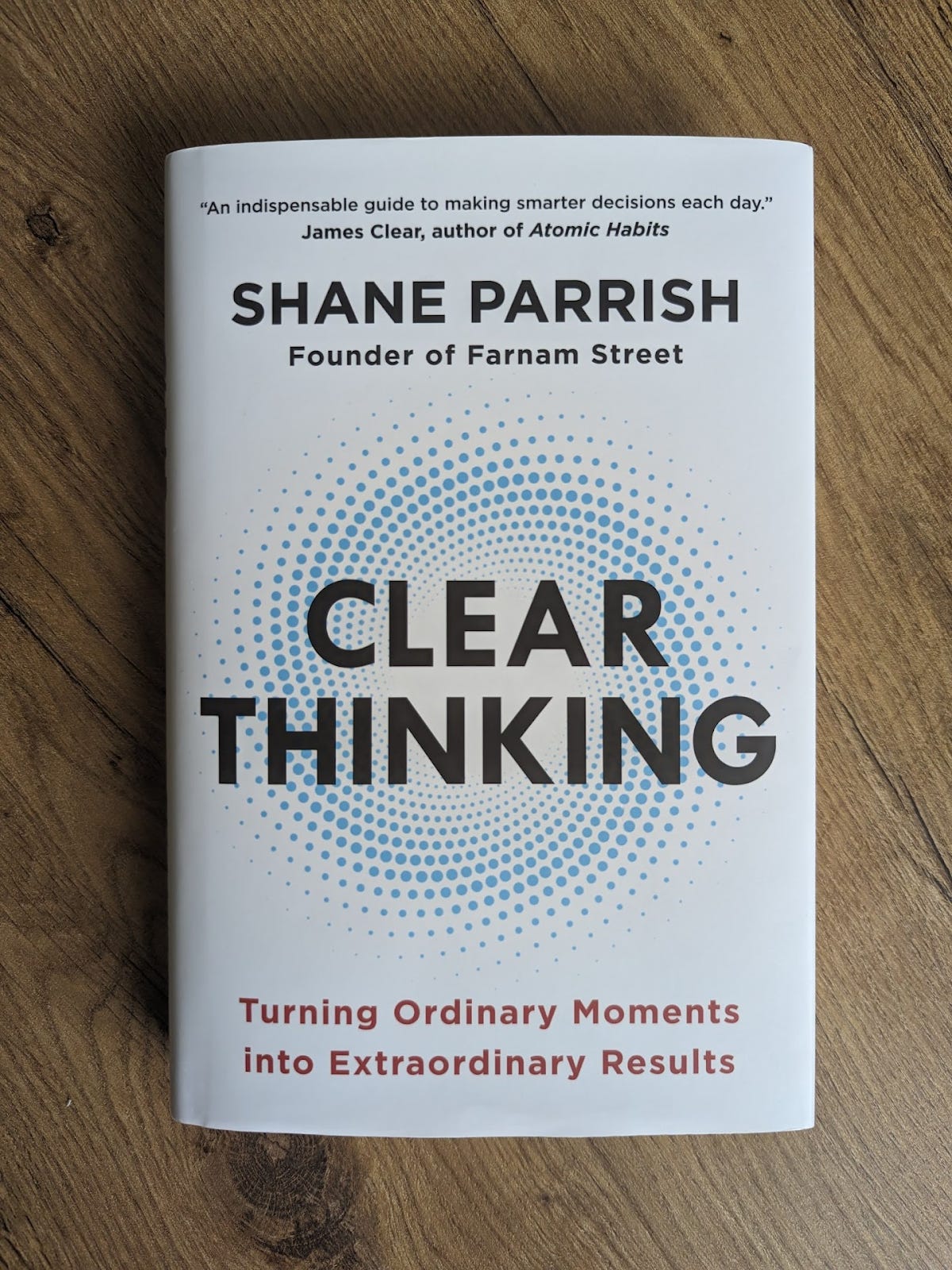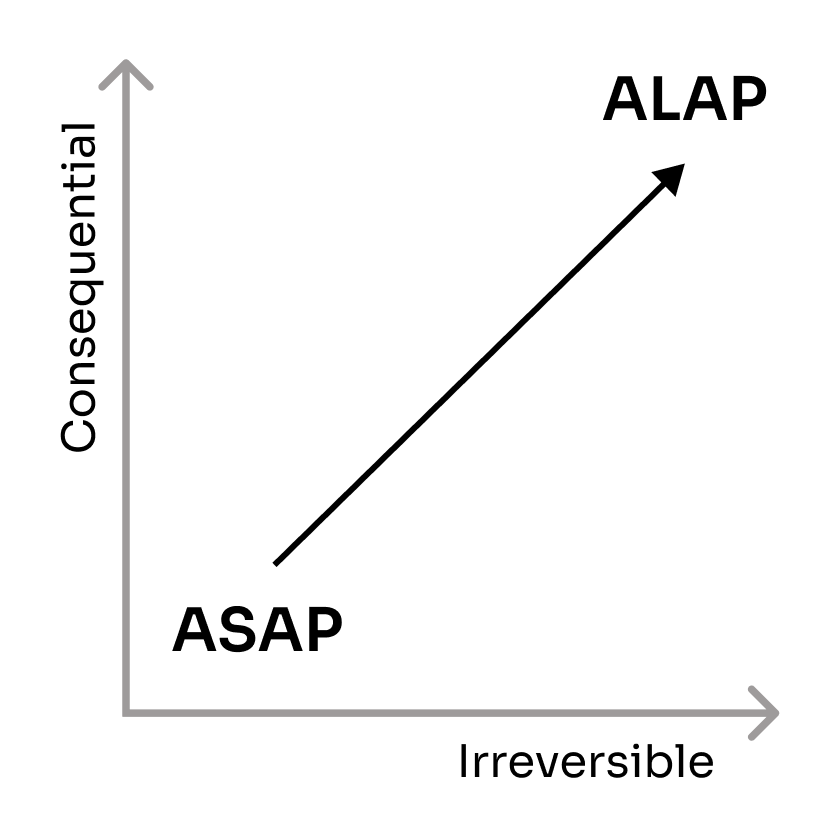Secrets of Clear Thinking by Michał Poczwardowski
Secrets of “Clear Thinking” - by Michał Poczwardowski #
Excerpt #
Summary and key insights from the book: “Clear Thinking: Turning Ordinary Moments into Extraordinary Results” by Shane Parrish
Have you ever regretted clicking the send button with an angry message right after sending it?
You made a bad decision.
Successful people know how to make great decisions. The good news is that this skill can be learned.
Shane Parrish, the author of “Clear Thinking: Turning Ordinary Moments into Extraordinary Results”, is dedicated to understanding how the most successful people make decisions.
In this article, you will learn about key elements of the decision-making process outlined in his book.
I’m Michał, a regular reader of
, author of , and I have been invited by Anton and Orel to be a guest author. I’m delighted to share with you insights from one of my favourite books on decision-making!
[

Clear Thinking: Turning Ordinary Moments into Extraordinary Results
Myth Busting: A Decision vs Its Outcome #
“All good decisions result in good outcomes; all bad decisions result in bad outcomes”… false!
Decisions are independent from their outcomes.
Self-serving bias makes us think that if the outcome is good, then it was our abilities that caused it, and we did well. When the outcome is bad, we blame bad luck or external factors.
Decision Helpers: Awareness of Human Nature #
Our biology plays a huge role in our ability to make good judgements. We are affected by hunger, thirst, sleep deprivation and other basic needs of our bodies. On top of this we all have weaknesses and being aware of them helps us overcome them.
The following defaults are the enemies of clear thinking:
Emotional default — we respond to the emotions of others, we feel attacked when someone gives us a negative feedback.
Ego default — we have a strong desire to feel right, not necessarily be right. Each time someone rejects our proposed solution, we feel attacked, even if their solution is objectively better.
Social default — we lean towards conformity, we want to be liked, when someone omits us from the invitation to the meeting then we get scared and assume bad intentions. Being excluded from the team hurts.
Inertia default — we seek stability and avoid changes. Avoiding conflicts is easier than having a difficult conversation. We don’t want to switch to a better technology stack because we are scared of changes.
It is impossible to turn off our emotional responses because they are deeply wired — but having awareness of these defaults helps with addressing them.
Decision Helpers: Automatic Rules to Address Our Weaknesses #
If we know what our weaknesses are~,~ then we can create automatic rules that prevent them from happening.
Imagine that you have problems with on-the-spot estimations that you are making when a client or PM asks about estimation during an update call. You want to be helpful and rush to give them an estimate, but then they attach to it, and it leads to missed expectations~.~
Create a rule for yourself: “Never guess estimates on the spot during calls”.
So, the next time when someone asks for an estimation say:
“I’m sorry, but I’ll get back to you later/in-an-hour/in-x-mins.
I have a rule to not estimate on the spot.”
This automatic rule will help you with mismatched expectations. People tend to follow rules and do not question them.
Checklists are good examples of rules to follow: pre-deployment checklists can help us to make sure all the actions have been made to safely deploy. Less space for human error means more chances to get it right.
Deciding #
Problem Definition #
Write the problem down, it helps with making invisible visible. Make sure you understand the problem well before going further.
When working with teams, create two separate meetings:
The first is dedicated to problem definition
The second one is dedicated to solutions.
Evaluate Options #
Evaluate possible options:
Force yourself to come up with as many possible options as you can, and if there are just two possibilities, force yourself to find the 3rd one.
For each option answer the question “and then what?”, trying to predict its consequences.
Imagine that one of the options is off the table and you have to evaluate the rest without this possibility.
Imagine that you must combine two options instead of choosing one and that this is the only possibility.
Think of the opportunity cost of each option.
Get high-quality information that is unfiltered by other people, and try to get to the source of the information. Keep in mind that different groups have different incentives that might influence the information you get from them.
When to stop gathering options for new information?
When the first negative consequences of waiting for too long appear.
When you no longer find useful information.
When it is already evident which options to choose.
Doing #
Assess decisions by figuring out how they are consequential and reversible.
[

If the cost to reverse the decision is low, and consequences are low, make it ASAP (As Soon As Possible, bottom left)
When the cost to reverse is high, or even impossible, and consequences are high, make it ALAP (As Late As Possible, top right)
Keep in mind the margin of safety. If you know what the maximum traffic on the website might be then it is good to add some margin of safety to keep servers running or introduce proper load balancing.
The decision = the judgement that a certain option is the best one
— Shane Parrish
Reflection #
Document the decision that you are making the best you can — dump all your thoughts and opinions. Do not rely on memory because you will not remember it clearly.
When making decisions in teams, create a record that is clear to everyone so people can get back to previous decisions and understand them.
Summary #
Decision-making serves as the basis for how we operate.
Improving decision-making positively improves almost every aspect of our lives:
Know how emotions and your defaults play their role.
Spend time on defining problems.
Evaluate possible options.
Make a decision.
Reflect.
A summary of this book is a great example of acquiring information, in this case, on decision-making processes. You can get key insights from the book but this article is heavily influenced by my perception, each of you may find different pieces that will resonate more with you than me.
Abstract means to “pull away from” — this post is an abstraction of the book. It is not high-quality information that you should look for when making important decisions. However, if you enjoyed this summary, you will like the book. I hope you enjoyed this abstraction of the book.
Thanks for reading!
Michał
Tech Books — Guest Post Note #
Anton here. I’ve been very impressed with
’s work on for a while. I find his articles thought-provoking, and very useful.
Some of his best articles are:
We recently considered having guest posts, and Michał is the first one that came to our mind :)
I hope you enjoyed it as much as I did!
Subscribe to Tech Books #
Like a book club, but without the annoying people. Weekly article about the best book from the Tech world.